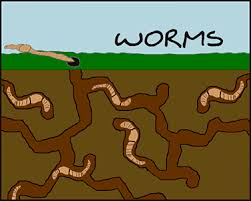Hmmm...when I see that title I think of one random activity that isn't really connected to a big idea. Maybe it's because I spent many years teaching science that way...finding cookie cutter activities that were "cute" or "fun". Things that kept the kids attention, but maybe didn't truly build their knowledge or understanding. As I become more of an inquiry teacher, I am trying very hard to get away from this idea.
 So instead...I'll talk about my next investigation that we will start on Monday. We will be building terrariums to bring a school yard ecosystem into the classroom. It will be a model of what happens outside. On Monday the teachers will bring in:
So instead...I'll talk about my next investigation that we will start on Monday. We will be building terrariums to bring a school yard ecosystem into the classroom. It will be a model of what happens outside. On Monday the teachers will bring in:
4 glad ware containers (approx 6"x4")
grass seeds
potting soil
rocks
worms
Each table group will build a terrarium with rocks, soil, and grass seeds. Then we will put in a few worms. Over the next few days we will watch it grow as a team and notice the changes in our terrariums. We will attempt to capture some bugs from outside (crickets are fun!) to add to our habitat as well as some other factors such as sticks, leaves, etc..
The students will get to record data, take pictures, spray the habitat with mist (water) and learn about the components of a community, the role or niche of the worm, understand the population of crickets are carnivores and need other bugs to eat or they will die, etc... This is a great lead into the unit on Food Chains and Food Webs as well.
4 glad ware containers (approx 6"x4")
grass seeds
potting soil
rocks
worms
Each table group will build a terrarium with rocks, soil, and grass seeds. Then we will put in a few worms. Over the next few days we will watch it grow as a team and notice the changes in our terrariums. We will attempt to capture some bugs from outside (crickets are fun!) to add to our habitat as well as some other factors such as sticks, leaves, etc..
The students will get to record data, take pictures, spray the habitat with mist (water) and learn about the components of a community, the role or niche of the worm, understand the population of crickets are carnivores and need other bugs to eat or they will die, etc... This is a great lead into the unit on Food Chains and Food Webs as well.

I will be teaching about worms- not sure why I chose this, but I did! Good thing I have a while to prepare :)
ReplyDeleteJennifer